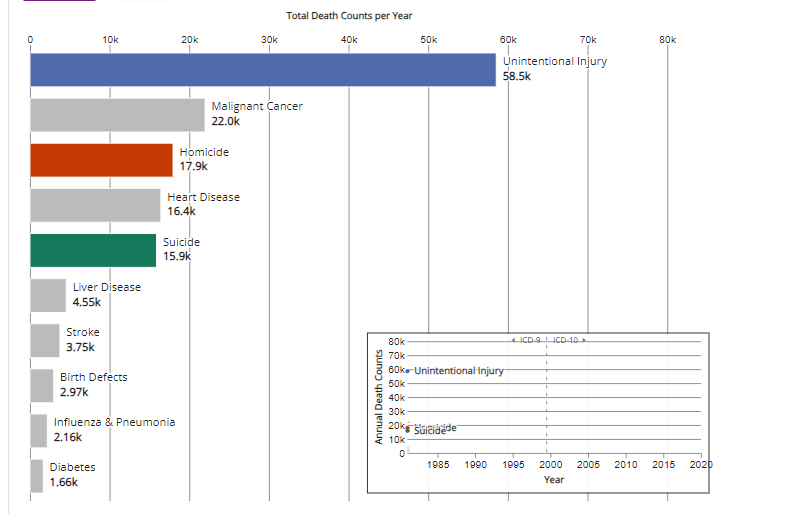Dismemberment insurance is a specialized form of coverage that provides financial assistance in the event of accidental death or severe injury resulting in dismemberment. If you’re looking for quick insights into what this insurance covers, here’s what you need to know:
- Coverage Focus: Primarily for accidents resulting in loss of life or limb, hearing, speech, or sight.
- Payout Structure: Typically pays a benefit to the insured or beneficiaries
- Different Types: Includes group and voluntary plans, as well as specific travel accident coverage.
- Key Benefits: Financial protection and assistance with medical and rehabilitation costs, offering peace of mind during unforeseen tragedies.
The purpose of dismemberment insurance is to supplement traditional life insurance by covering scenarios it might not, like accidental injuries that result in permanent physical loss. Benefits from these policies can provide crucial financial support, helping to cover medical expenses and rehabilitation costs, safeguarding your family’s financial well-being.
I’m Les Perlson, with experience in insurance, particularly in crafting policies related to dismemberment insurance. I understand the complexities business owners face when navigating insurance options, and I’m here to clarify these matters for you.

Basic dismemberment insurance glossary:
– ad&d insurance coverage
– ad&d insurance payout
Understanding Dismemberment Insurance
What is Dismemberment Insurance?
Dismemberment insurance is a type of coverage specifically designed to provide financial protection in cases of accidental death or severe injuries that lead to dismemberment. This insurance is not a replacement for life insurance but rather a supplement that covers unique situations not typically included in standard life policies.
Accidental Death: This part of the policy offers financial benefits to beneficiaries if the insured person dies due to an accident. Common scenarios include car accidents, falls, or other unforeseen incidents.
Serious Injury: If an accident leads to the loss of a limb, sight, hearing, or speech, dismemberment insurance provides a payout. This helps cover medical expenses and rehabilitation costs, offering relief during challenging times.
Types of Coverage
Understanding the different types of coverage available can help you choose the best option for your needs. Here’s a breakdown of the main types:
Group Plans: These are typically offered by employers as part of an employee benefits package. They provide coverage for employees under a single policy, often at a lower premium due to the pooled risk. Group plans are convenient and can be a cost-effective way to ensure employees have additional protection.
Voluntary Plans: Employees have the option to purchase additional coverage beyond what their employer might provide. These plans offer flexibility, allowing employees to select the level of coverage that suits their personal needs and financial situation.
Travel Accident Coverage: This type focuses on providing protection while traveling, often used by employees who travel frequently for work. It covers accidents that occur during business trips, providing peace of mind for those on the move.
Each type of coverage comes with its own set of benefits and limitations. It’s important to read the policy details carefully and understand what is covered to make an informed decision. Whether you’re an employer looking to offer comprehensive benefits or an individual seeking extra protection, understanding these options is key to ensuring financial security in the face of unexpected events.
Benefits of Dismemberment Insurance
Accidental Death Benefits
When you think about dismemberment insurance, it’s crucial to understand its role in providing financial protection during unexpected events. One of the standout features is the accidental death benefits. If the insured dies due to an accident, like a car crash or a fall, this insurance offers a financial payout to the beneficiaries. This payout can be a lifesaver, helping families cover immediate expenses and stabilize their financial situation after a loss.
A key aspect of accidental death benefits is the concept of double indemnity. This means that the payout from the insurance can be double the amount specified in the policy if the death is due to an accident. It’s a significant boost that can make a difference in dealing with unforeseen expenses.
Accidents covered under this policy include a wide range of scenarios, such as traffic accidents, drowning, or even accidents involving heavy machinery. These benefits are meant to complement other insurance policies, not replace them. They’re specifically designed to handle the financial strain accidents can impose.
Dismemberment Benefits
Dismemberment insurance also offers protection in the event of severe injuries. If an accident results in the loss of a limb, sight, or causes permanent paralysis, the insurance provides a payout. This payout is essential because it can help cover medical expenses, rehabilitation costs, and ongoing care needs.
For instance, losing a limb or sight can drastically change one’s life, requiring significant medical intervention and rehabilitation. The insurance payout can assist in covering these costs, ensuring that the insured can access necessary treatments and therapies without financial stress.
The benefits are typically structured around the severity of the injury. For example, the loss of a limb might result in a higher payout compared to the loss of a finger. This structure helps ensure that the financial support aligns with the level of impact the injury has on the insured’s life.
In summary, dismemberment insurance provides crucial financial support in the face of accidents. Whether it’s through accidental death benefits or support for severe injuries, this insurance can be a vital part of your financial safety net, helping to manage the unexpected costs that accidents can bring.
Limitations and Exclusions
Events Not Covered
While dismemberment insurance offers valuable protection, understand its limitations. Policies often have exclusions to clarify what is not covered. Common exclusions include:
-
Illness: Coverage does not extend to deaths or injuries caused by illness. If a policyholder dies from a heart attack or cancer, for instance, the policy will not pay out.
-
Suicide: Deaths due to suicide are generally excluded from coverage. This exclusion is standard across many types of insurance to prevent misuse.
-
Non-commercial aviation: Accidents occurring while operating or traveling in non-commercial aircraft are not covered. This means private pilots or those flying in small, private planes are excluded.
Other exclusions can include injuries or deaths resulting from acts of war, felonies, or the influence of drugs or alcohol not prescribed by a doctor. It’s crucial to read your policy’s fine print or speak with your insurance representative to understand all exclusions.
Claim Process
Filing a claim for dismemberment insurance involves several steps to ensure that the incident falls within the policy’s coverage.
-
Autopsy and Investigation: In the event of a claim, an autopsy may be required to determine the exact cause of death or injury. This step is crucial in confirming that the incident was indeed accidental and not due to an excluded cause like illness or suicide.
-
Investigation: The insurance company will conduct a thorough investigation. This process involves gathering evidence, such as medical records and accident reports, to verify the claim’s validity.
-
Approval: Once the investigation is complete, the insurer will decide on the claim. If approved, the payout process begins, providing financial relief to the beneficiaries or the insured.
Understanding the claim process helps manage expectations and ensures that all necessary documentation is prepared, making the process smoother and quicker. Always keep a copy of your policy terms handy for reference during this time.
Frequently Asked Questions about Dismemberment Insurance
What does dismemberment mean in insurance?
In insurance terms, dismemberment refers to the loss or loss of use of specific body parts or functions. This includes the loss of limbs, such as arms or legs, or senses like sight, speech, and hearing. Dismemberment insurance provides financial compensation to the insured if such losses occur due to an accident. The compensation amount often depends on the severity and type of dismemberment. For instance, losing a limb might result in a higher payout than losing a finger.
Is it worth getting accidental death and dismemberment insurance?
Deciding whether to get accidental death and dismemberment (AD&D) insurance depends on individual needs and circumstances. Here are some points to consider:
-
Supplemental Coverage: AD&D insurance acts as a supplemental policy, providing additional financial protection alongside life insurance. It is not a replacement for comprehensive life insurance but can improve coverage, especially for those in high-risk jobs or activities.
-
Cost-Effective: AD&D insurance is generally less expensive than full life insurance, making it an affordable option for additional protection.
-
Specific Coverage: It covers specific events like accidents leading to death or dismemberment, which might not be covered by regular life insurance policies.
For those who frequently engage in risky activities or work in hazardous environments, AD&D insurance can be a valuable addition to their financial safety net.
What is covered under accidental death and dismemberment insurance?
Accidental death and dismemberment insurance covers specific incidents resulting in death or severe injury. Key coverage areas include:
-
Accidental Death: If the insured dies due to an accident, the policy pays a death benefit to the beneficiaries. Covered events might include car accidents, falls, drowning, or exposure to extreme elements.
-
Dismemberment: The policy provides benefits for partial or complete loss of limbs or functions. This can include the loss of an arm, leg, sight, hearing, or speech. The payout varies based on the severity of the injury.
Coverage is strictly limited to accidents. Deaths or injuries from illnesses, suicide, or non-accidental causes are not covered. Always review the specific terms of your policy to understand the full scope of coverage.

Conclusion
At NPA Benefits, we believe in offering flexible options that cater to the diverse needs of individuals and businesses. Our focus is on providing cost-saving health insurance solutions that prioritize control and adaptability for our clients.
Dismemberment insurance is a crucial component of a comprehensive financial protection plan, offering peace of mind in the face of unexpected accidents. By choosing our plans, you gain access to custom coverage that addresses both accidental death and severe injury, ensuring that you and your loved ones are financially protected.
Our commitment to cost efficiency means that you can enjoy the benefits of dismemberment insurance without breaking the bank. We strive to provide affordable options that don’t compromise on coverage quality. This makes our plans an attractive choice for those seeking additional protection without the high costs typically associated with insurance.
In summary, partnering with NPA Benefits means choosing a path of flexibility and financial prudence. We are dedicated to helping you steer the complexities of insurance with ease, ensuring that you have the right coverage to face life’s uncertainties. Let us be your trusted partner in securing a safer, more stable future.







